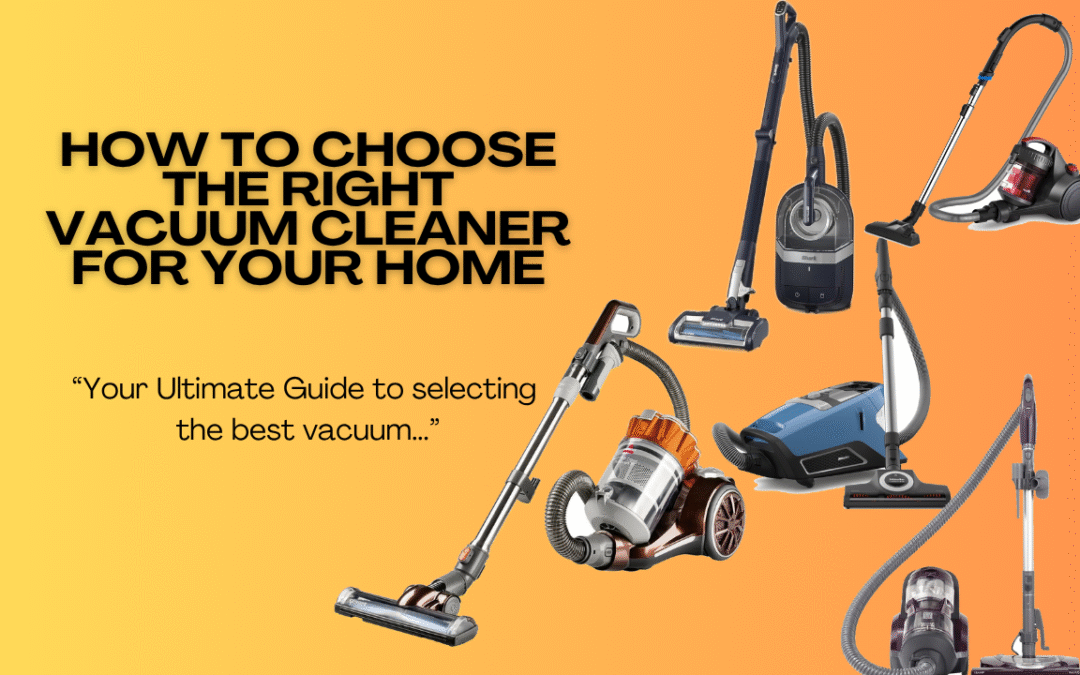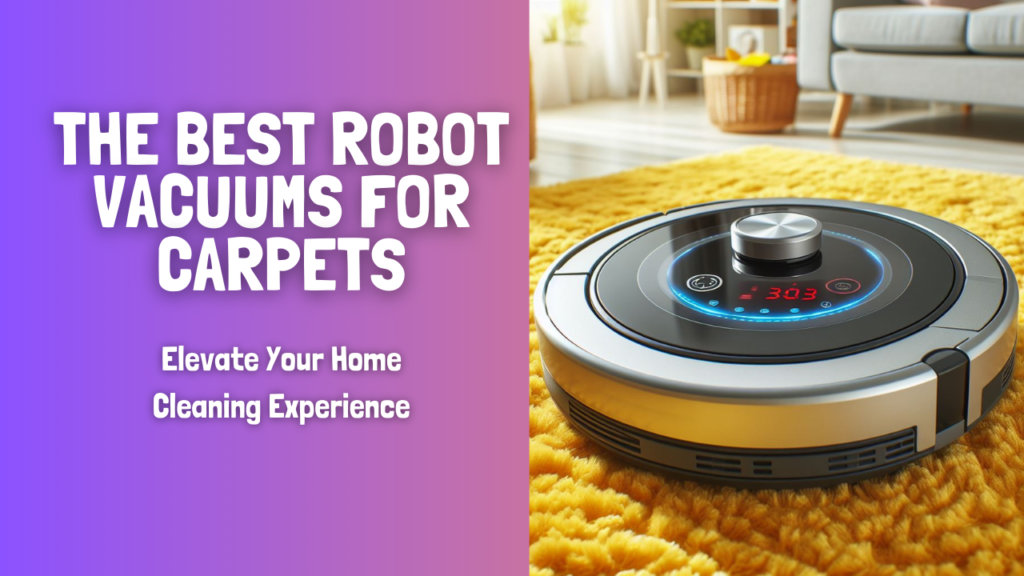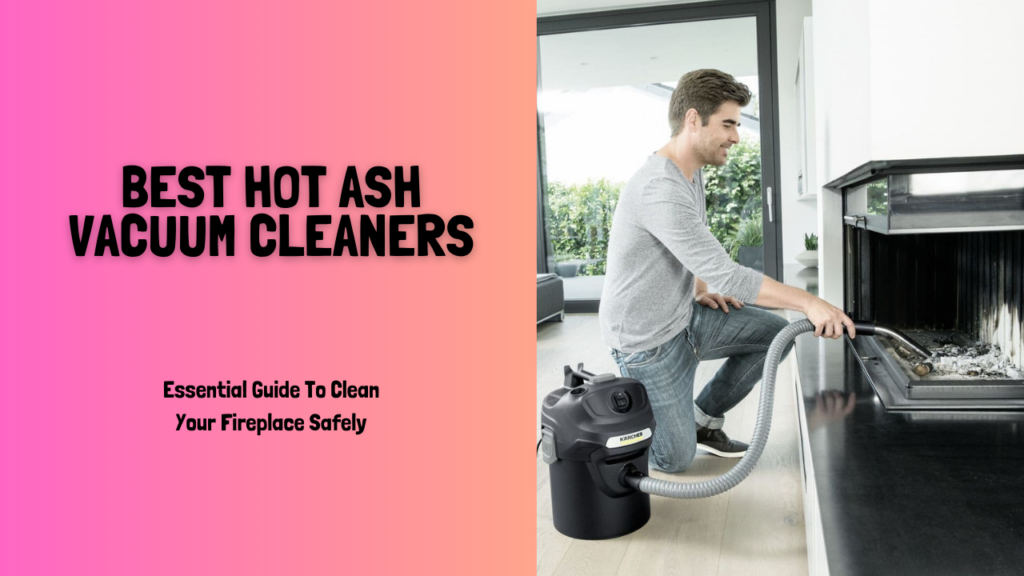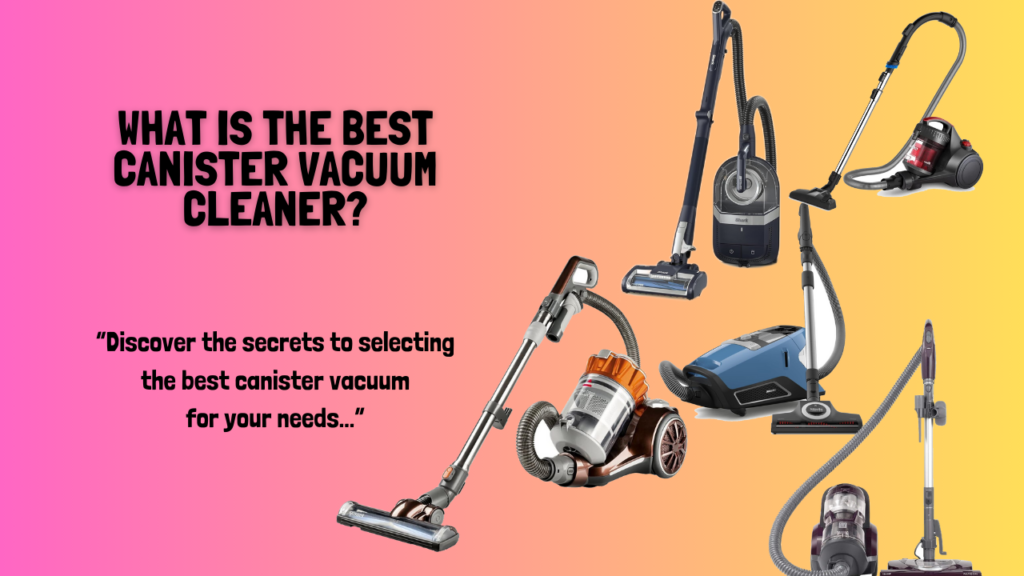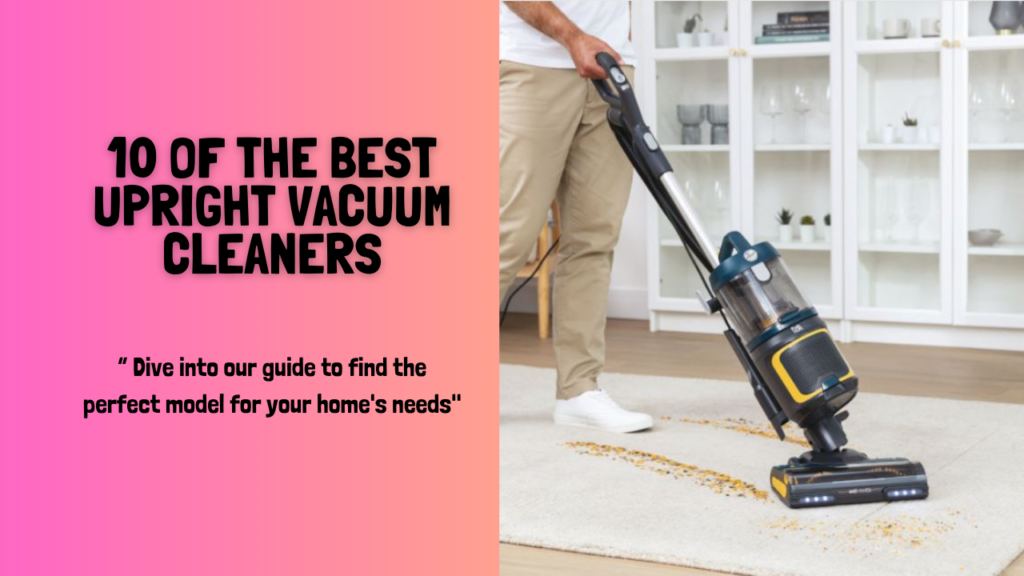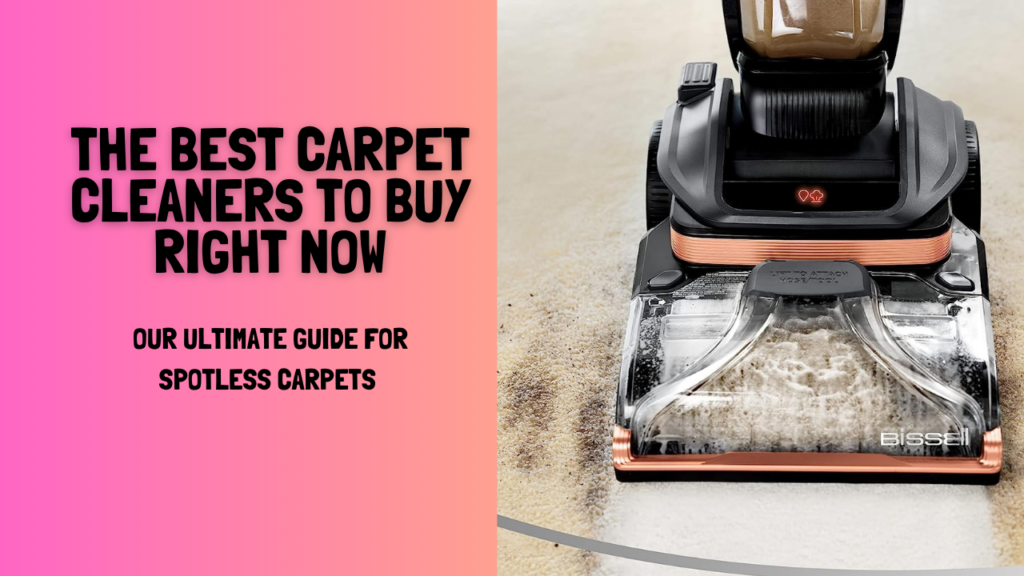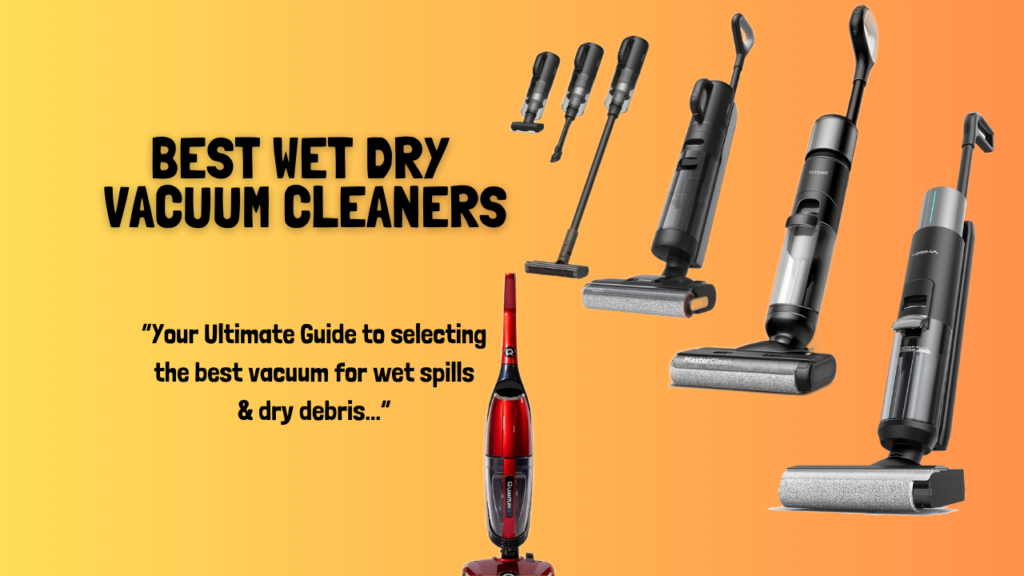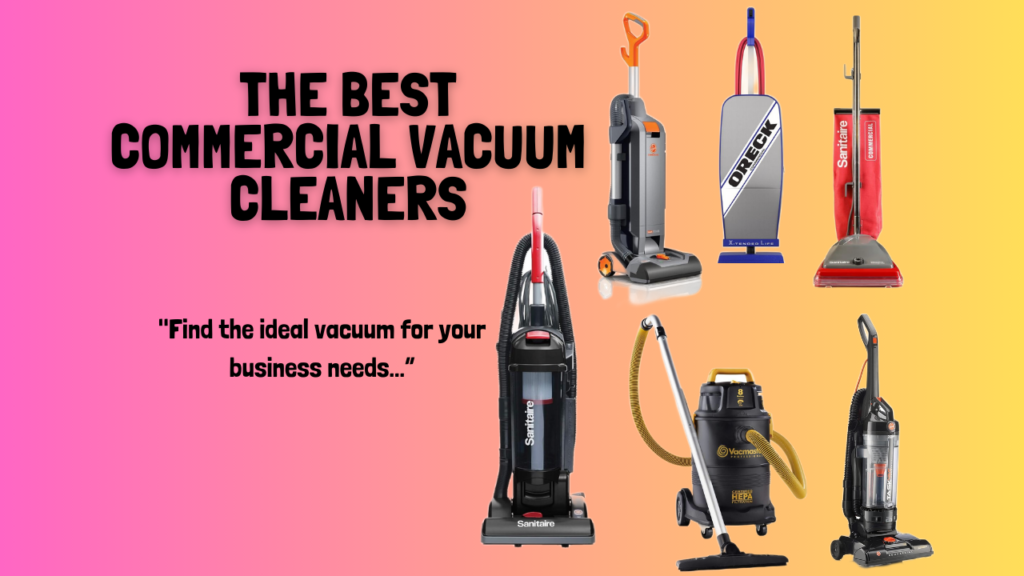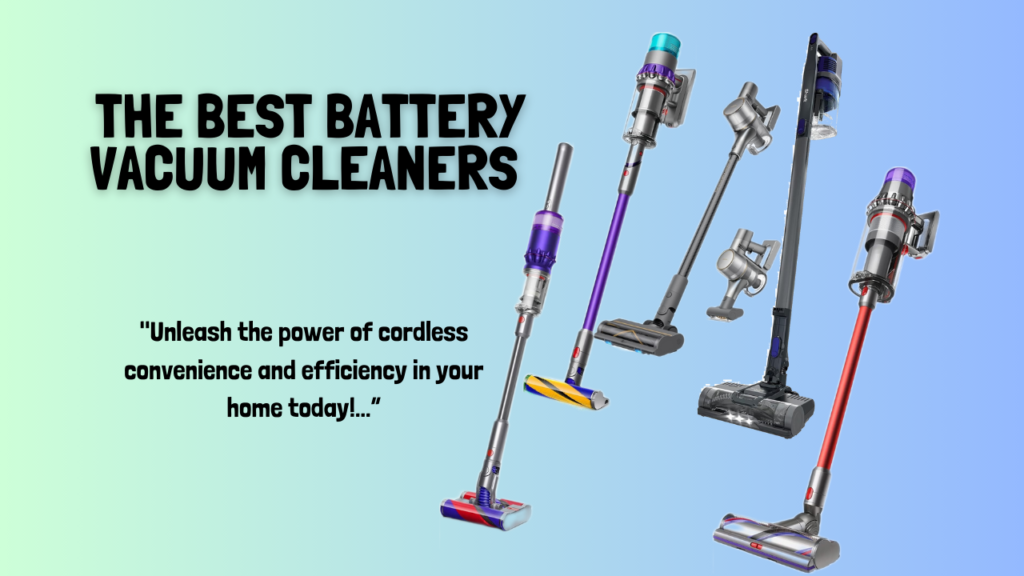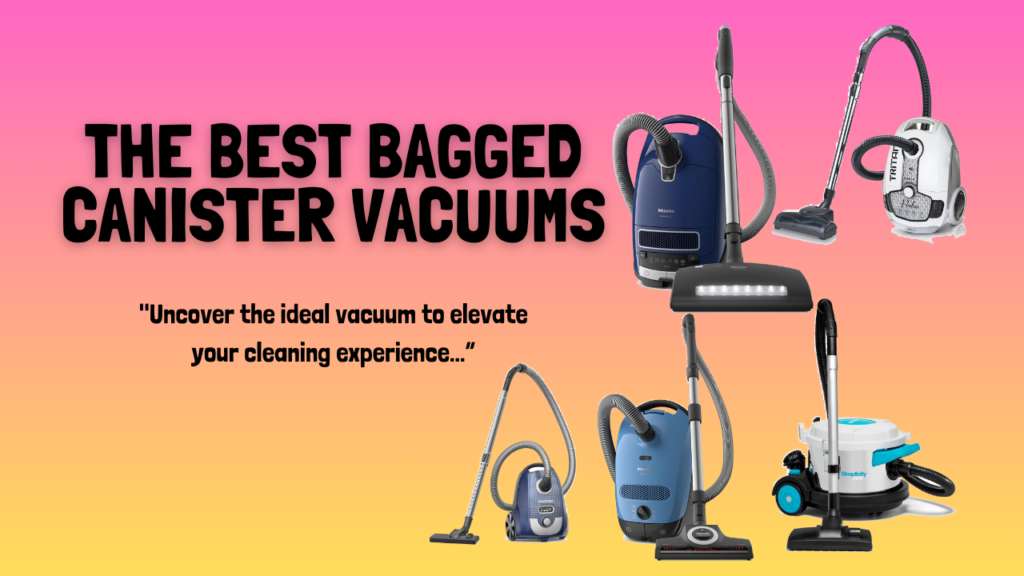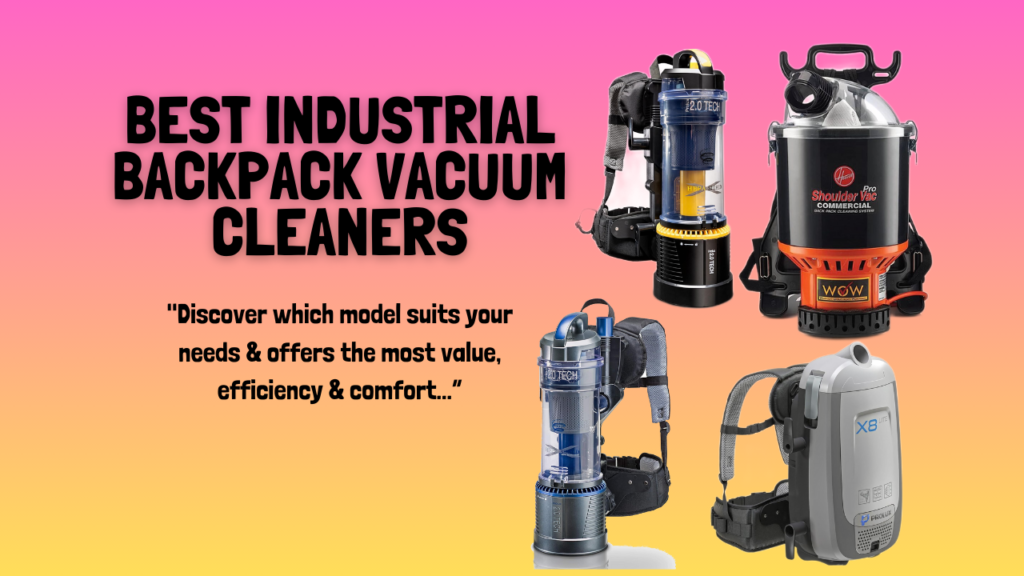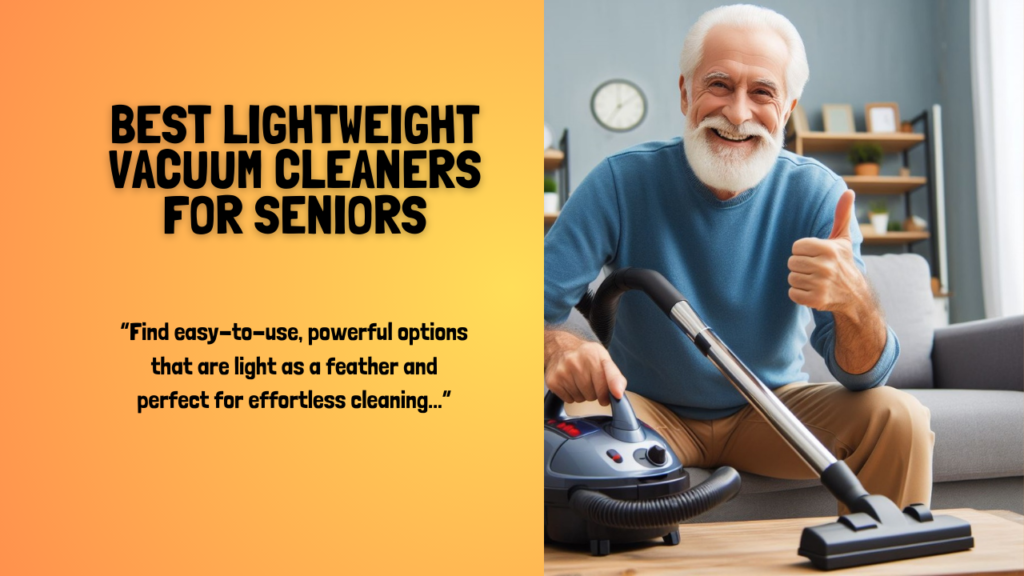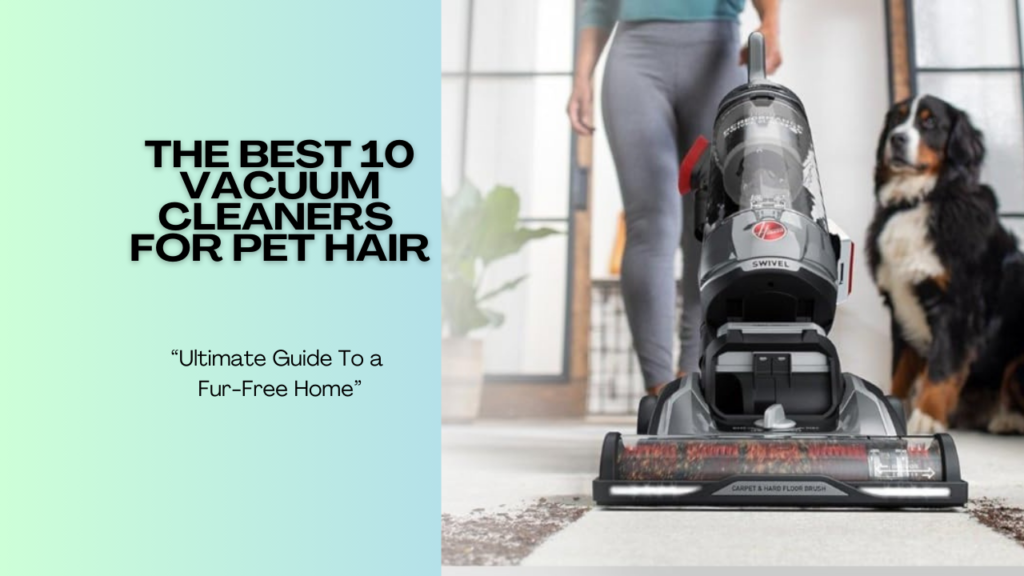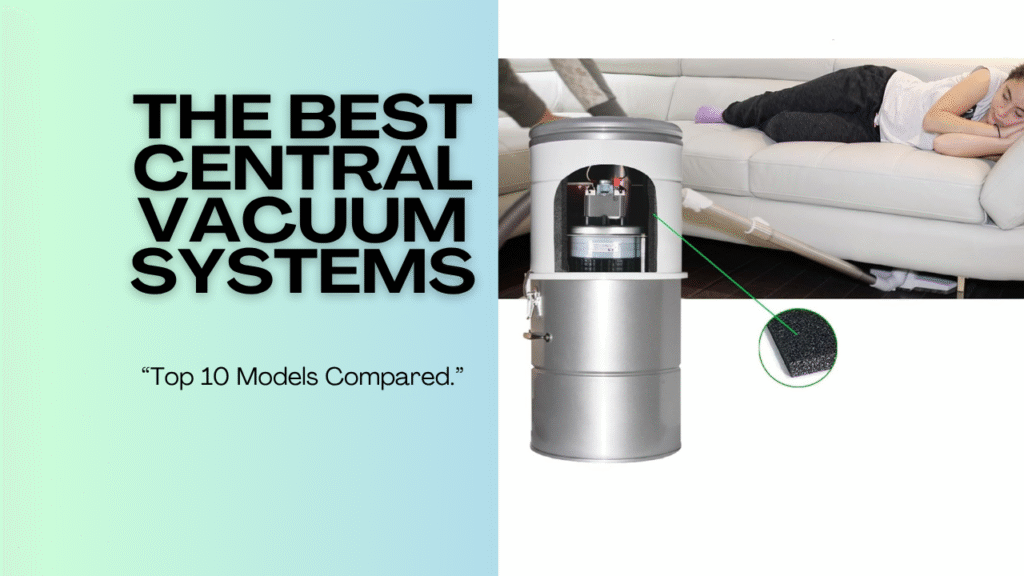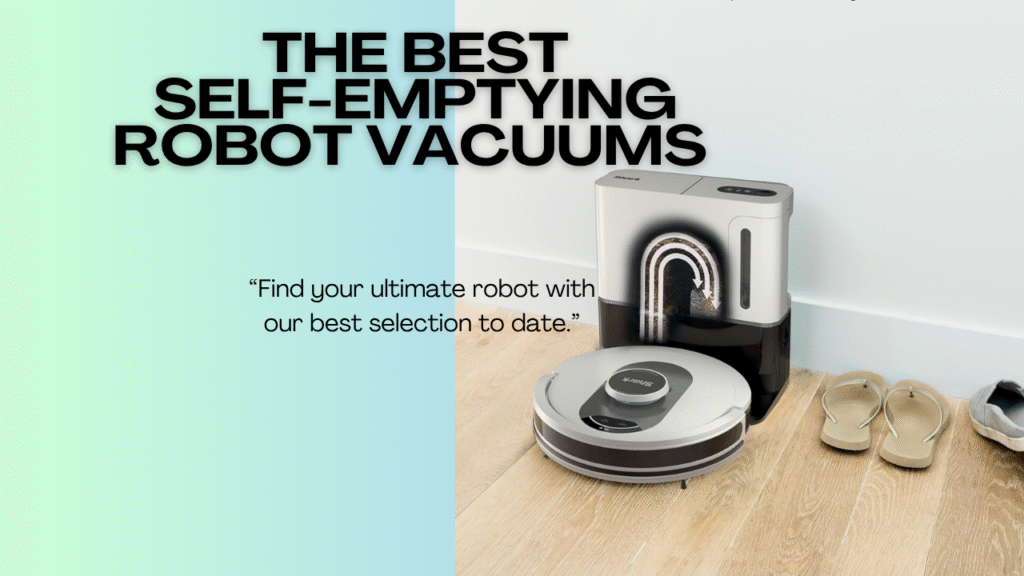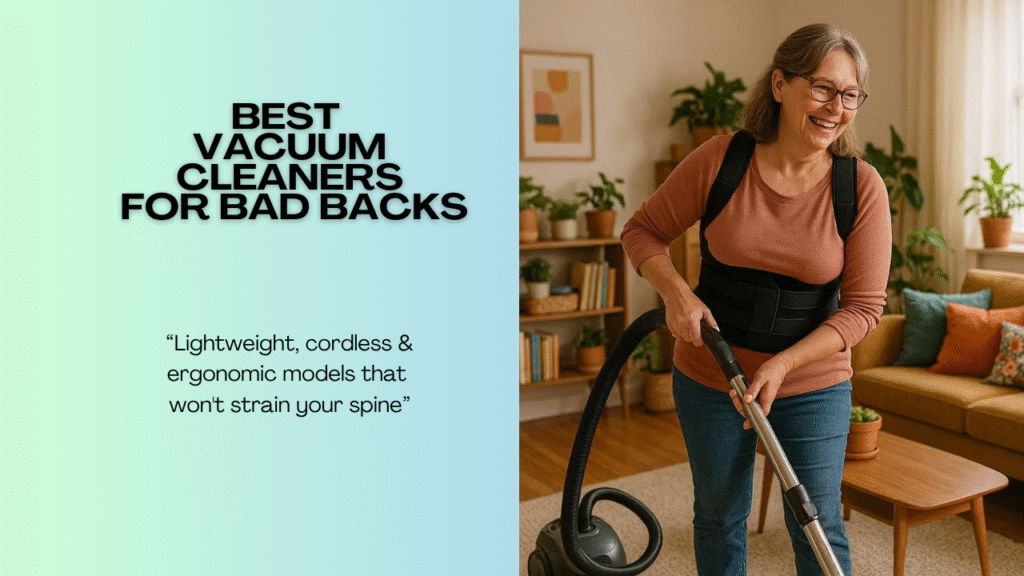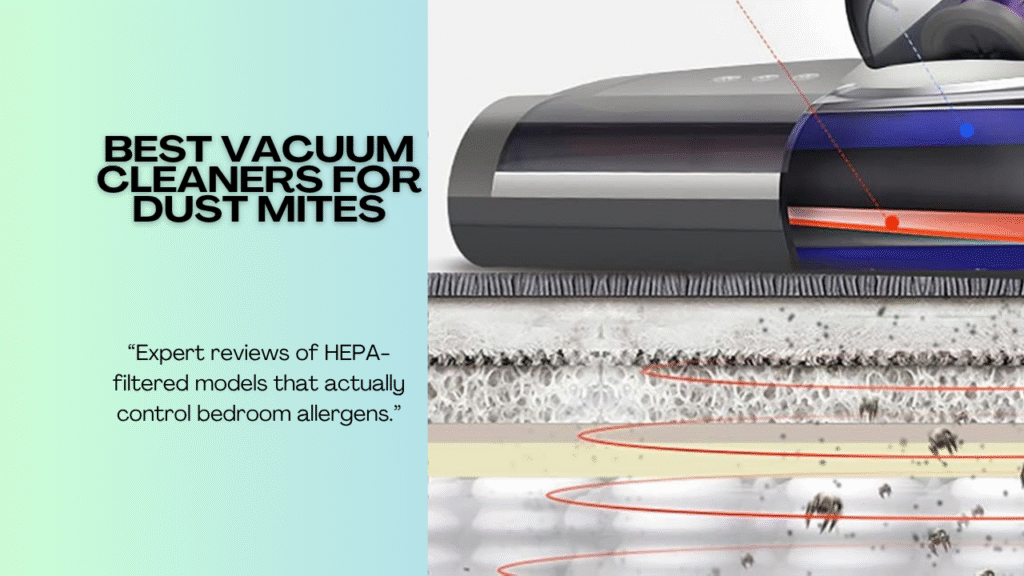Table of Contents
I’ve been there, standing in the vacuum cleaner aisle, completely overwhelmed. There are so many options staring back at you. Upright, cordless, robot, canister… the list goes on. And here’s the thing: buying the wrong vacuum is frustrating. You’re stuck with a machine that doesn’t work for your home. It’s too heavy, doesn’t pick up pet hair, or dies halfway through cleaning. But here’s the good news. Learning how to choose the right vacuum cleaner for your home doesn’t have to be complicated.
I’m going to walk you through everything you need to know. We’ll cover your specific cleaning needs, the different types available, and which features actually matter. By the end of this guide, you’ll know exactly what to look for.
Think of me as your friend who’s done all the research. I’ve spent countless hours testing and reviewing vacuum cleaners. I know what works and what’s just marketing hype. So grab a coffee and let’s figure out which vacuum is perfect for your home.

Check Out Our List Of The Best Canister Vacuum Cleaners Available
Understanding Your Cleaning Needs
First things first – let’s talk about your home. Every house is different, and that’s important. A studio apartment needs something completely different from a three-story house. Start by asking yourself a few questions.
How big is your home? Larger homes need vacuums with bigger dust capacities. You don’t want to empty the bin five times per cleaning session. They also benefit from longer battery life or cord length.
What types of floors do you have? This is crucial. Carpeted homes need strong suction and proper brush rolls. Hardwood floors require gentler cleaning to avoid scratches. Many homes have both, which changes everything.
Do you have pets? This is a game-changer. Pet hair gets everywhere – carpets, furniture, corners. You need specialized tools and powerful suction. Standard vacuums often struggle with this challenge.
Anyone with allergies in the house? If so, HEPA filtration becomes essential. Regular filters just push allergens back into the air. That defeats the whole purpose of cleaning.
Are there stairs? Carrying a heavy upright vacuum up and down stairs is exhausting. You might want something lighter or a cordless option. Trust me, this matters more than you think.
Types of Vacuum Cleaners Explained
Let me break down the main types available. Each has its strengths and weaknesses. Understanding these helps you narrow down your options quickly.
Upright Vacuums: These are the traditional powerhouses. They typically offer the strongest suction and largest dust capacity. They’re great for carpets and large homes. However, they can be heavy and less maneuverable. Storage can also be a challenge.
Cordless Stick Vacuums: These have exploded in popularity recently. They’re lightweight, convenient, and easy to store. Perfect for quick clean-ups and multi-floor homes. The downside? Battery life limits cleaning time. They also typically have smaller dust bins.
Robot Vacuums: Set it and forget it. These autonomous cleaners work while you’re away. They’re fantastic for maintenance cleaning and under furniture. But they can’t replace a proper deep clean. They also struggle with very thick carpets.
Canister Vacuums: The vacuum body sits on the floor with a long hose. These offer great suction and are excellent for stairs. They’re also gentler on hardwood floors. The trade-off is having to drag the canister around. Some people find this annoying.
Handheld Vacuums: Small, portable, and perfect for cars or quick messes. They’re great as a secondary vacuum. Don’t expect them to clean your whole house. They’re too small for that job.
Wet/Dry Vacuums: These handle both dry debris and liquid spills. They’re powerful and versatile. However, they’re usually bulky and loud. Most homes don’t need this type.
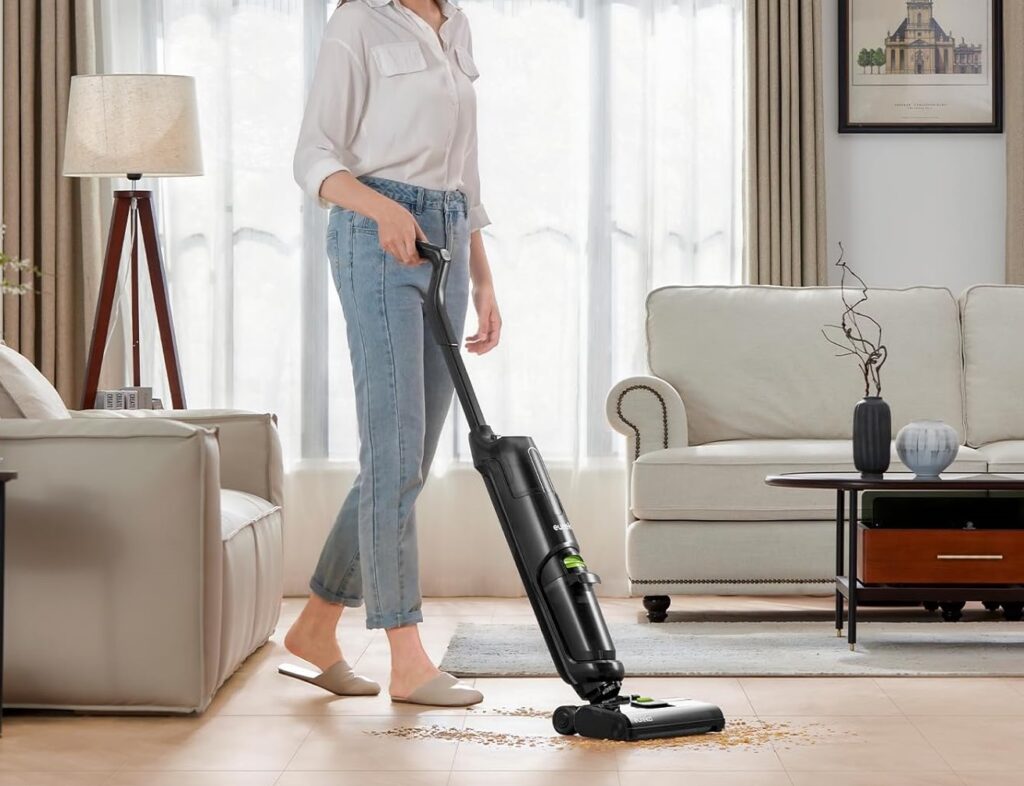
Key Features That Actually Matter
Now let’s cut through the marketing fluff. Some features genuinely improve your cleaning experience. Others are just nice-to-haves that jack up the price.
Suction Power: This is king. Without good suction, nothing else matters. Look for strong motor ratings and positive user reviews about performance. Don’t just trust the manufacturer’s claims.
Filtration Systems: HEPA filters trap 99.97% of particles as defined by EPA air filtration standards. They’re worth the investment if you have allergies. Standard filters work fine for most people. Just remember to clean or replace them regularly.
Dust Capacity: Bigger isn’t always better, but tiny bins are frustrating. You’ll empty them constantly. Consider your home size when evaluating this. Aim for at least 0.5 liters for small homes. Larger spaces need 1 liter or more.
Battery Life (for cordless): Marketing claims can be misleading. They test on the lowest power setting. Real-world runtime is usually 20-40 minutes on high power. Make sure that’s enough for your home.
Cord Length (for corded): Nothing’s more annoying than constantly switching outlets. Look for at least 25 feet of cord. Add the hose length for your actual cleaning radius.
Weight: This matters more than you think. You’re lifting and pushing this machine regularly. Anything over 18 pounds gets tiring quickly. Test the weight before buying if possible.
Attachments: Crevice tools, dusting brushes, and upholstery tools extend functionality. They’re genuinely useful. However, having 15 attachments you never use is pointless. Focus on quality over quantity.
Floor Type Considerations
Your flooring determines which vacuum works best. Let’s break this down by surface type.
Carpet Cleaning: Carpets need rotating brush rolls and strong suction. The brush agitates the fibers and lifts embedded dirt. Upright vacuums traditionally excel here. Look for adjustable brush height settings. Deep pile carpets need different settings than low pile.
Hardwood and Laminate: These surfaces scratch easily, as noted by the National Wood Flooring Association’s maintenance guidelines. You want vacuums with soft wheels and gentle brush rolls. Many people prefer canister vacuums or cordless sticks for hardwood. Make sure you can turn off the brush roll. Spinning brushes can scatter debris on hard floors.
Mixed Flooring: Most homes have a combination of surfaces. This is tricky. You need a vacuum that transitions smoothly between them. Look for automatic floor detection or easy manual switching. Cordless stick vacuums often handle this well.
Tile and Grout: Tile is fairly easy to clean. However, grout lines trap dirt. You need decent suction to pull dirt from these grooves. A vacuum with a motorized brush roll helps. Some models include specialized grout cleaning tools.
Area Rugs: If you have rugs over hardwood, you need flexibility. The vacuum should clean both without adjustment. Robot vacuums can struggle with thick rug edges. Keep this in mind.
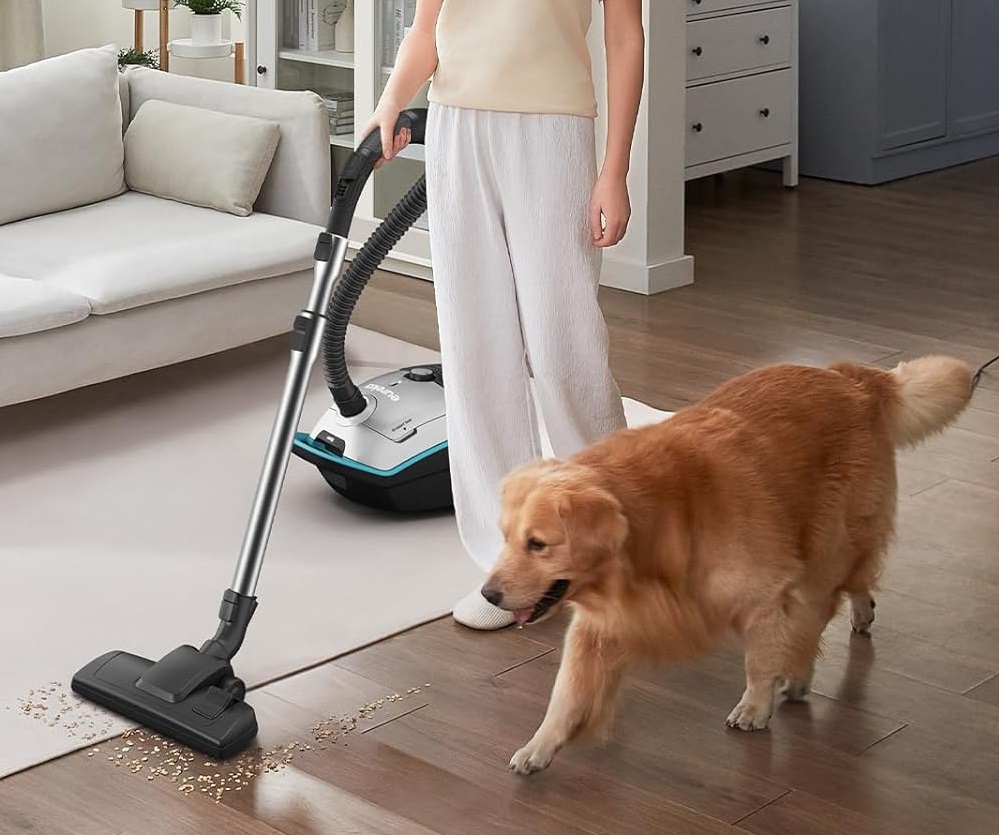
Check Out Our List Of Best Upright Vacuum Cleaners Available
Budget Planning
Let’s talk money. Vacuum cleaners range from £50 to £800+. More expensive doesn’t always mean better. But super cheap usually means disappointment.
Entry-Level (Under £150): These work fine for basic needs. Small apartments, mostly hard floors, or light cleaning. Don’t expect them to last forever. They typically lack advanced features. Quality can be hit-or-miss. Read reviews carefully.
Mid-Range (£150-£400): This is the sweet spot for most people. You get reliable performance and decent features. Many excellent vacuums fall in this range. Brands balance cost and quality well here. This is where I’d recommend most people focus.
Premium (£400+): These offer the best performance and features. They typically last longer and include advanced technology. Worth it if you have specific needs. Large homes, severe allergies, or lots of pets justify this investment.
Consider long-term costs too. Bagless models save money over time. However, you might need replacement filters. Cordless vacuums eventually need new batteries. These can cost £50-£100. Factor this into your budget.
Don’t forget about warranties. A good warranty protects your investment. It also indicates manufacturer confidence. Look for at least 2 years of coverage. Some premium brands offer 5+ years.
Brand Reputation and Reliability
Not all vacuum brands are equal. Some consistently deliver quality. Others have frequent issues. Let me share what I’ve learned.
Leading Brands: Dyson, Shark, and Miele often top reliability rankings. They invest heavily in research and development. Their customer service is generally good. However, you pay a premium for these names.
Value Brands: Bissell, Hoover, and Vax offer solid performance at lower prices. They might not have cutting-edge features. But they get the job done. These are great for budget-conscious shoppers.
Specialty Brands: Some brands focus on specific types. iRobot dominates robot vacuums. Eufy offers great budget robots. Henry is beloved for commercial-grade reliability.
Research customer reviews before buying. Look for patterns in complaints. One negative review means nothing. Twenty reviews mentioning the same issue? That’s a red flag.
Warranty expectations vary by brand. Premium brands often include 2-5 years. Budget brands might only offer 1 year. Extended warranties are sometimes available. Evaluate if they’re worth the cost.
Customer service matters when things go wrong. Can you reach someone easily? Do they resolve issues quickly? Read reviews about post-purchase support. A great vacuum with terrible service causes frustration.
Where you buy also matters. Amazon, Curry’s, and Argos offer buyer protection. They handle returns easily. Buying directly from manufacturers sometimes includes perks. Extended warranties or free accessories are common.
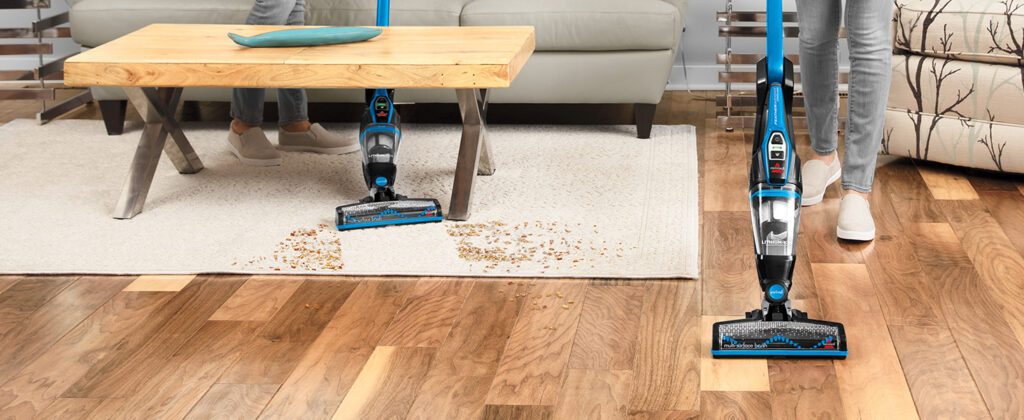
Special Considerations
Let’s dive into specific situations. These factors might completely change your decision.
Pet Hair Removal: This deserves special attention. Pet hair is stubborn. It wraps around brush rolls and clogs filters. You need specialized tools. Look for tangle-free brush rolls. These prevent hair from wrapping up. Anti-allergen seals keep dander trapped inside. Motorized pet tools make furniture cleaning easier. Check out our guide to the best vacuum cleaners for pet hair for specific recommendations.
Allergy and Asthma Needs: HEPA filtration is non-negotiable here. Regular filters release particles back into your home. Sealed systems prevent air leakage. This keeps allergens contained. Some vacuums carry asthma & allergy friendly Certification from the Asthma and Allergy Foundation of America. These undergo rigorous testing.
Noise Levels: Some vacuums sound like jet engines. Others are surprisingly quiet. Noise matters if you have babies or work from home. Robot vacuums are generally quieter. They can run while you’re busy. Cordless stick vacuums also tend to be less noisy.
Storage Space: Big upright vacuums need closet space. Cordless stick vacuums mount on walls. They’re out of the way. Consider where you’ll keep your vacuum. Also think about attachment storage. Losing tools in a closet is frustrating.
Maintenance Requirements: All vacuums need care. Filters require cleaning or replacement. Brush rolls need detangling. Bagless bins need emptying and washing. Some models are easier to maintain. Look for tool-free maintenance designs. Quick-release bins save time.
Common Mistakes to Avoid
I see people make these errors repeatedly. Learn from their mistakes.
Buying on Price Alone: The cheapest option seems tempting. But it often breaks quickly or performs poorly. You end up buying twice. That costs more in the long run. Balance price with quality and features.
Ignoring Specific Needs: Marketing makes every vacuum sound perfect. But your home has unique requirements. A pet owner needs different features than someone without pets. Don’t be swayed by flashy features you won’t use.
Overlooking Warranty and Support: A vacuum without warranty is risky. Things break. Having protection gives peace of mind. Also research if parts are available. Some brands discontinue models quickly. Then you can’t get replacement filters or batteries.
Not Considering Long-Term Costs: Factor in ongoing expenses. Bags, filters, and batteries add up. Sometimes a pricier bagless model saves money. Calculate total cost of ownership over 3-5 years.
Buying Too Much Vacuum: A top-tier model might be overkill. Small apartment dwellers don’t need industrial suction. Match the vacuum to your actual needs. Save money for other things.
Skipping Reviews: Manufacturer descriptions sound great. Real user experiences tell the truth. Spend time reading reviews on multiple sites. Look for detailed feedback from verified buyers.
Forgetting About Weight: Specifications list weight in small print. People overlook this. Then they’re exhausted after vacuuming. If you have mobility issues, weight is crucial. Test it in store if possible.

Making Your Final Decision
You’ve absorbed a lot of information. Now let’s turn that into action. Here’s how to choose your perfect vacuum.
Create Your Personal Checklist: Write down your must-haves. Include floor types, home size, and budget. Note any special needs like pets or allergies. Rank these by importance. This focuses your search.
Prioritize Must-Haves vs Nice-to-Haves: LED headlights seem cool. But do you really need them? Separate essential features from extras. Essentials might be: HEPA filter, 40-minute runtime, under 7 pounds. Nice-to-haves might be: display screen, smart app, multiple colors.
Set Your Budget Range: Decide your comfortable spending limit. Allow some flexibility. Sometimes spending £50 more gets significantly better features. But stick reasonably close to your budget.
Research Specific Models: Now that you know what you need, find models that match. Read professional reviews. Watch video reviews on YouTube. Check multiple sources for balanced perspectives.
Read Verified Customer Reviews: Amazon and retailer sites have thousands of reviews. Sort by “Most Recent” to see current quality. Look for reviews from people with similar homes. Their experiences matter most.
Consider Trying Before Buying: Some retailers offer return policies. Buy from somewhere with easy returns. Test it thoroughly in your home. If it doesn’t work out, return it. Don’t settle for disappointment.
Check for Sales and Deals: Vacuum prices fluctuate significantly. Black Friday, Boxing Day, and January sales offer huge discounts. Sign up for price alerts. Wait for a sale if you can.
Check Out Our List Of Best Cordless Vacuum Cleaners Available
Our Top Recommendations
I’ve reviewed countless vacuum cleaners. Here are some solid starting points based on common needs.
For comprehensive comparisons of top models, check out our detailed best vacuum cleaners guide. It breaks down the top performers in each category.
If you’re dealing with pet hair specifically, our dedicated pet hair vacuum guide covers specialized models with anti-tangle brushes and powerful suction.
For Large Homes with Carpet: Look at powerful upright vacuums. Models with large dust capacities and long cords work best. Strong suction is essential.
For Apartments and Small Spaces: Cordless stick vacuums shine here. They’re easy to store and maneuver. Quick clean-ups become effortless.
For Pet Owners: Specialized pet hair models make life easier. Tangle-free brushes and HEPA filters are crucial. Don’t skimp on suction power.
For Multi-Floor Homes: Cordless stick vacuums handle stairs beautifully. They transition smoothly between surfaces. Look for auto-adjust features.
For Budget Shoppers: Mid-range models offer excellent value. They balance performance and price well. Avoid the absolute cheapest options.
For Allergy Sufferers: Sealed HEPA systems are non-negotiable. Make sure the entire air path is sealed. This prevents allergen escape.

Conclusion On How to Choose the Right Vacuum Cleaner for Your Home
Choosing the right vacuum cleaner for your home comes down to understanding your needs. Start by evaluating your floors, home size, and special requirements. Then match those needs to the right vacuum type.
Don’t get overwhelmed by fancy features. Focus on what genuinely matters – suction power, filtration, and reliability. Read reviews from real users. Set a realistic budget that balances quality and affordability.
Remember, the most expensive vacuum isn’t always the best. The right vacuum is the one that fits your specific situation. It should make cleaning easier, not frustrate you.
Take your time with this decision. A good vacuum lasts 5-10 years. That’s a long time to live with a mistake. Use the checklist approach I outlined. Research thoroughly before buying.
And here’s my final advice: trust your gut. If a vacuum feels right when you test it, that matters. Specifications tell part of the story. Your actual experience tells the rest.
Happy cleaning!

